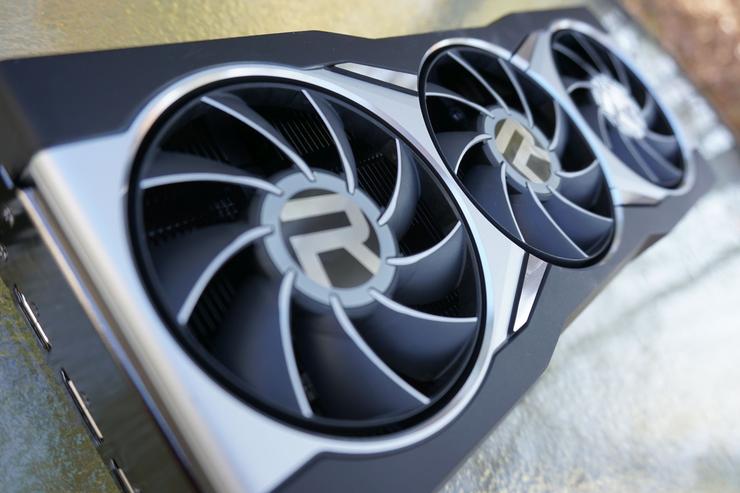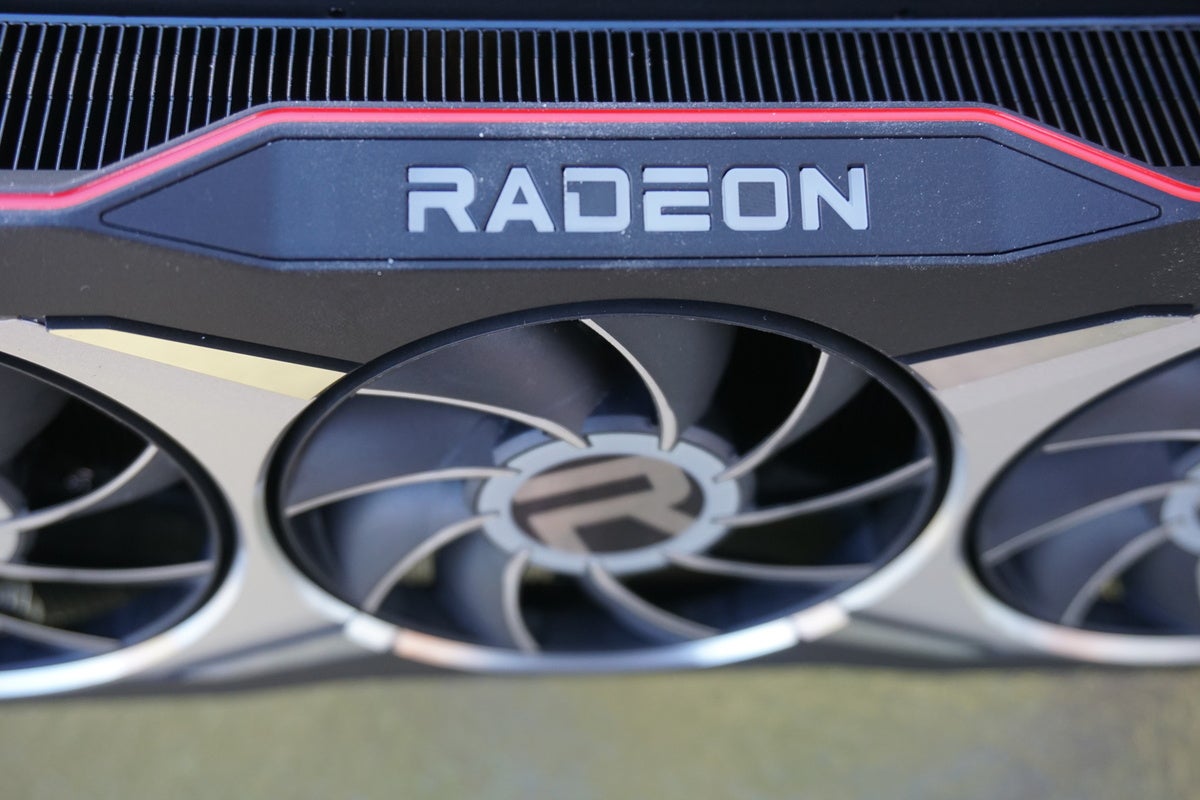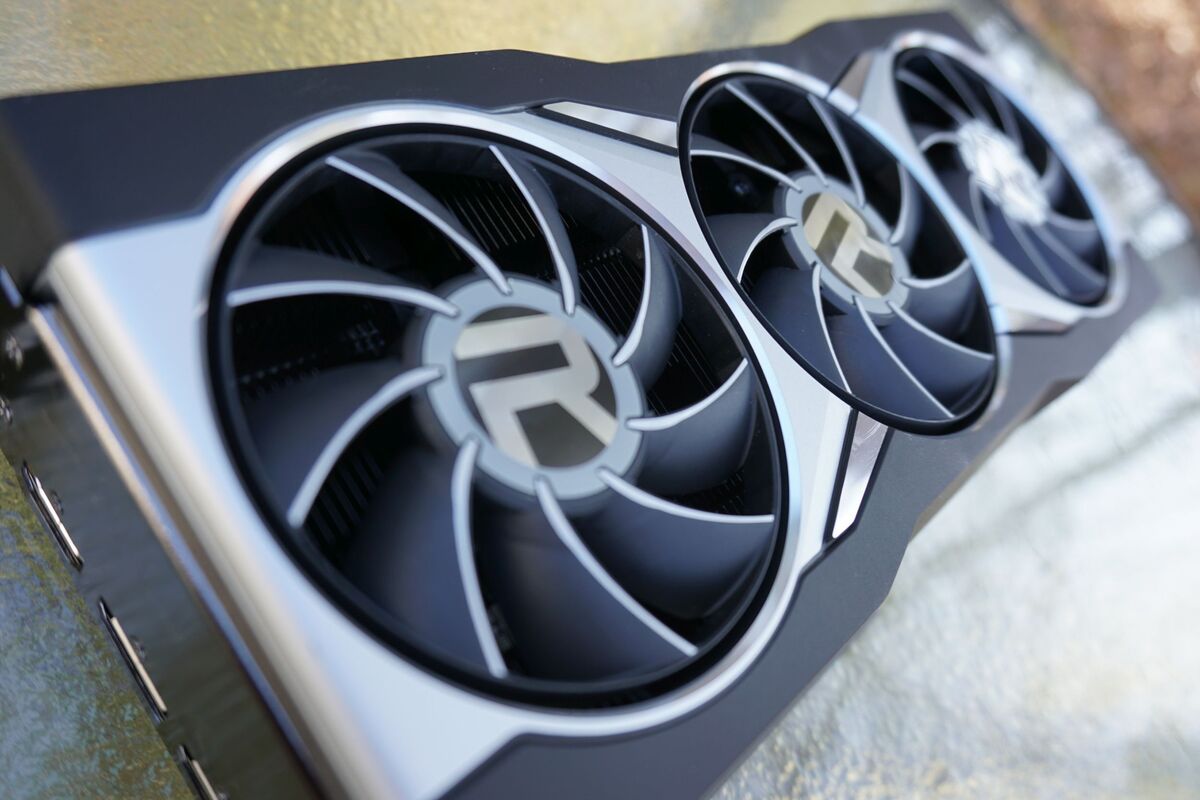 Credit: Brad Chacos/IDG
Credit: Brad Chacos/IDG
Should you buy the Radeon RX 6800 or 6800 XT?
Definitely. The Radeon RX 6800-series is a stunning return to the high end for AMD, proving that yes, Team Red can still go blow-for-blow with Nvidia’s top offerings. These are outstanding graphics cards.
 Brad Chacos/IDG
Brad Chacos/IDGThe $580 Radeon RX 6800 triumphs over the $500 GeForce RTX 3070 in most situations. The $650 Radeon RX 6800 XT trades blows with the pricier $700 GeForce RTX 3080 at 4K, but typically surges past its rival as you move down to 1440p and 1080p resolution. That’s the common performance theme. Nvidia loaded its Ampere architecture with abundant CUDA cores that deliver excellent 4K performance, but the RTX 30-series struggles to keep all those cores fed at lower resolutions. AMD’s RDNA 2-based graphics cards scale down much more gracefully. If you’re planning to buy any of these $500-plus graphics cards for use with a high-refresh-rate 1440p or 1080p monitor, AMD is the clear choice.
The Radeon RX 6800-series delivers at 4K, too. The Radeon RX 6800 beats the RTX 3070 by a solid amount in most games, while the Radeon RX 6800 XT and RTX 3080 wind up within 5 frames of each other in everything but Strange Brigade, where Nvidia’s card wins by 9 percent.
AMD holds a key memory advantage for high-resolution gaming, too. Both of these cards come equipped with 16GB of GDDR6 memory, bolstered by the on-die 128MB “Infinity Cache.” By contrast, the RTX 3070 has 8GB of GDDR6, and the RTX 3080 has 10GB of faster GDDR6X memory. Some of today’s games already consume more than 8GB at 4K resolution. Rare titles use more than 10GB.
 AMD
AMD
There’s an ample 16GB of GDDR6 memory built into the Radeon RX 6800-series GPUs, a key advantage.
Making matters worse for Nvidia, memory demands go up when you activate ray tracing, and new consoles just launched with larger memory pools than past generations. You won’t have to worry about AMD’s ample 16GB memory buffer running out of capacity for the foreseeable, but you might need to turn down texture settings on GeForce cards in a year or two.
Speaking of ray tracing, the cutting-edge lighting technology makes its debut in AMD’s RDNA 2 architecture. The technology is very intensive and creates a huge performance impact on any GPU. The Radeon RX 6800 and 6800 XT manage to achieve playable frame rates with ray tracing on at 1440p and 1080p resolution, especially if you don’t mind tweaking some settings, but not 4K. That's a bummer. The GeForce RTX 30-series’ second-gen RT core implementation keeps performance higher than AMD’s ray accelerators, however, and AMD has no answer for Nvidia’s fantastic DLSS 2.0 technology that uses AI upsampling to claw back performance lost to all those bouncing rays. DLSS enables 4K gaming with ray tracing on. AMD has teased a more open DLSS rival dubbed “FidelityFX Super Resolution,” but it’s both mysterious and unavailable for now.
If great performance in ray-traced games is a goal for you—especially in games that use lot of ray-traced effects, like Minecraft RTX or Cyberpunk 2077—then Nvidia is the clear choice. That said, the 8GB memory buffer already slows down the RTX 3070 with ray tracing on in Watch Dogs: Legion. Decisions, decisions.
 Brad Chacos/IDG
Brad Chacos/IDGAMD talks down about Nvidia’s ecosystem of proprietary features, but Green Team tools like G-Sync, DLSS, Nvidia Reflex, Nvidia Broadcast, Shadowplay, NVENC, and CUDA optimizations in creative workloads are all worthy reasons to forsake Team Red. AMD counters many of those with excellent features of its own—PR is keen to point out that pairing Radeon Boost with Radeon Anti-Lag challenges Nvidia Reflex, for example—but Nvidia has earned consumer trust over the years that AMD is still trying to win back. And again, the lack of a DLSS rival hurts, especially because some games that don’t support ray tracing are starting to include DLSS to boost performance.
AMD has a nifty trick up its own sleeve, though: Smart Access Memory. If you pair a Radeon RX 6000-series GPU with a Ryzen 5000 processor in an X570 motherboard, you’ll see performance increases of varying amounts in varying circumstances—in excess of 10 percent in the most favorable conditions, per AMD. It’s built using the PCIe spec’s Resizeable BAR attribute, so Intel and Nvidia may counter the technology with future BIOS updates, but for now, Smart Access Memory serves as the cornerstone of AMD’s Ryzen-and-Radeon “Ultimate Gaming Platform” pitch. We weren’t able to test it in time for this review, but stay tuned for an in-depth analysis soon.
Phew! Graphics cards sure are a lot more complicated than they used to be. Let’s bring it all together.
 Brad Chacos/IDG
Brad Chacos/IDGThe $580 Radeon RX 6800 XT smokes the RTX 3070 in everything but ray tracing. It’s faster at 4K, it’s faster at high-refresh rate 1080p, and it packs twice as much memory, which feels significantly more future proof for the higher resolutions this card targets. If AMD priced the card closer to the RTX 3070’s $500 cost it would be a walk-off home run. As-is, the GeForce RTX 3070 is still worth considering for 1440p gaming given its substantially lower price tag, but I’d recommend spending up for the Radeon RX 6800—more for the increased VRAM than the raw performance. The 8GB capacity of the RTX 3070 is already limiting in some titles, and not just at 4K.
The $650 Radeon RX 6800 XT is also mighty enticing. Compared to the GeForce RTX 3080, it delivers comparable 4K performance, faster 1440p and 1080p performance, and 6GB more memory capacity, all for $50 less than Nvidia charges. Nvidia’s card uses faster GDDR6X memory, but raw capacity will probably make a bigger difference for 4K gaming in the years to come. The Radeon RX 6800 XT may be $650, but it delivers incredible value versus the competition.
Ray tracing performance, other Nvidia ecosystem features, and crucial DLSS support could sway you toward Team Green, especially if you’re already entrenched. The GeForce RTX 3070 and 3080 remain excellent cards that recently earned high marks in our reviews. But strongly consider joining the Red Team this time around. The Radeon RX 6800-series meets or beats the performance of its GeForce rivals in most circumstances and offer tangibly more memory capacity—a key metric at these lofty resolutions. I’m a massive believer in DLSS 2.0, but if I were spending my own money, I’d probably put my cash down on the Radeon GPUs.
Welcome back to the high end, AMD. The Radeon RX 6800 and RX 6800 XT will melt your face. I can’t wait to see what the $999 Radeon RX 6900 XT can achieve when it launches December 8.

















